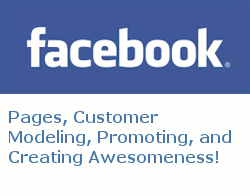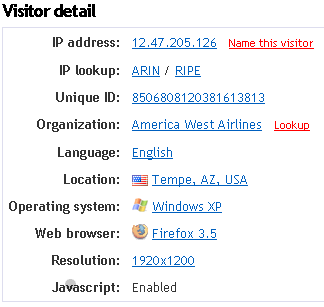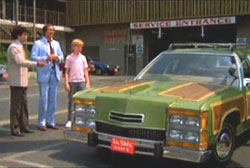
I find that for a lot of people, Facebook marketing consists of creating a Facebook page (or worse, a Facebook profile) and gathering a few “fans” who will give them just enough inspiration to feel they are being productive. They will put the Facebook “f” on their website in order to appear more modern, and keep their fingers crossed hoping that somehow Facebook will increase their profits.
There is a lot of confusion about Facebook, and especially for small businesses. However, small business is not alone, and unleashing the real value of marketing using Facebook is elusive for many companies. Efforts are often just enough to keep the person signing the checks on board for another 30 days for more trial and error. Poor planning and lack of measurement are commonplace in social media marketing, but that is not an effective way to run a marketing campaign.
Facebook can be a great place to market your business. If performed well, it can also help you to gather a lot of really useful data to help your business outside of the Facebook platform. Let’s unwrap a true sense of how a Facebook marketing campaign could look. This is the dramatically abbreviated version, of course. I will break this down into steps as follows:
- Facebook Marketing Step One: Your Facebook Page
- Facebook Marketing Step Two: Customer Modeling
- Facebook Marketing Step Three: Promoting Your Page
- Facebook Marketing Step Four: Making Awesomeness
Skip around as you like. Some of this is for the novice, while some of it is less novice. In any case, I hope that you will find it to be useful information.
Facebook Marketing Step One: Your Facebook Page
There is a lot that you can do with a Facebook page. Of course, note that I said “page” and not “profile”. There is a huge difference between a Facebook page and a Facebook profile. More companies are figuring this out every day as their profiles are being deleted for breaking Facebook’s policy regarding using profiles for business.
Name your page well, fill out every field in the Facebook page setup, and seed it with enough information that your earliest fans will know why they should “Like” it other than just because you said they should.
Optional: If you have a good FBML (Facebook Markup Language) programmer and a designer worth a hoot, it will help. This is not critical, but can be very useful.
Facebook Marketing Step Two: Customer Modeling
The step of customer modeling is skipped so often that there should be little wonder why most Facebook marketing fails miserably. Lack of proper customer modeling is a cause for many marketing endeavors to fail, but this is especially true in the current world where “everybody is a marketer” as witnessed in abundance on Facebook. A large segment of Facebook marketing is not performed by a marketing professional, but rather a business owner or somebody with limited marketing experience.
One of the tragic pieces of information missing for the average person trying their hand at Facebook marketing is that marketing does not just mean shotgun blast advertising. To get the most out of marketing, we need to know answers to questions of who, what, where, when, why, and how. We need to reach the right people or we waste credibility.
Customer modeling involves creativity, analytic thinking, and data. If you do not have the data to tell you who, what, where, when, how, and why people will respond to your marketing, you need to create it. Without knowing how to reach the right people with the right information, you may as well skip all the rest, because your time and money will largely be wasted. Worse yet, it can damage your brand value.
Fortunately, there are reliable ways to get your hands on this data you so badly need. If you are certain that you already have a good handle on customer modeling, move on to the next step. If not, don’t worry, I will get back to this, so move to the next step anyway.
Facebook Marketing Step Three: Promoting Your Page
An easy first approach to promoting a Facebook page is to suggest it to all of your Facebook friends. Sure, that makes sense, and if they actually like you, there is a better chance they will “Like” your page. This is fine, and I recommend it, but often not a really good target demographic for your business. Besides, don’t all of your friends already know what you do for a living?
A common hope is that you will have something so brilliant and earth-shaking that some of those friends will buy from you, and when their friends see that they “Like” your Facebook page, that it will spread massively and the whole population of Facebook will come swarming and buy everything you offer for sale. Yes, that sounds awesome, right? Rub a lamp! It does not work this way, and if you tried it, you probably already know this is the case.
An effective alternative is to use carefully targeted Facebook advertising to reach a specific audience. I am going to provide an example of how to reach specific people, and also how to use the information you gain from it.
Mark’s Example: Let’s say I am trying to sell Smart Slate interactive whiteboards. No, I do not sell these, and I have no stake in the market. I chose this, because I wrote about it as another example a while back. This is just an example to explain targeting using Facebook advertising to build a better marketing strategy.
What do I know about the Smart Slate market off the top of my head? I know that they are used in a lot of classrooms. I also know that schools have a hard time budgeting for them. I actually know this because my kids’ school has had fundraisers to buy them. So, in this case, I may want to test my Facebook ads with teachers and other school related interests. Why do I want to connect with teachers? I will explain that more in Step Four.
Since I am only going to sell these items in a specific region, I only want to target specific areas. I could choose to target anything from a worldwide audience to only my specific city. For the example, I will use my state of Kansas, and the surrounding states of Nebraska, Missouri, Colorado, Oklahoma. Now, in order to target teachers in my target area, I will go to create an ad on Facebook and see what kind of a target I can come up with. It will look something like this screenshot:

Notice that this brings the selected audience down in size but it is still far from being targeted. It still leaves me with 8,578,280 people age 18 and older who live in Kansas, Nebraska, Missouri, Oklahoma or Colorado. That is far too broad, and it could look like selling hamster skin purses at a college fraternity party. I am not out to waste time and money. I want more customers.
Next, I will set some demographic details. In this example, I will target young teachers who may be more interested in technology, so I am using 30-40 year old college graduates who have specified interests in their Facebook profiles as follows: teaching; teacher; elementary teacher; teaching resources; or teachers. Note that Facebook helped me by suggesting interests. Here is what it looks like:

Now I have an estimated reach of 44,480 people who live in Kansas, Nebraska, Missouri, Oklahoma or Colorado between the ages of 30 and 40 who graduated from college and like teaching, teacher, elementary teacher, teaching resources or teachers. This is looking better, but there is still a lot of potential for fine-tuning. This simply gives me a starting point for one of several ads I may want to use for testing my audience. In other test ads, I may want to broaden or narrow the age range and condense or expand my target based on demographics.
Once I have run the ads for a couple weeks, I will want to give careful attention to who responded. Facebook will report this information to me, and tell me what other common interests my responding test audience have. Who knows, I may find that a lot of my respondents also love hamster skin purses. If so, you can bet I am going to use that information in my other marketing efforts, as well as how I address my new pals on my Facebook page. I will use this information in my blogging and search engine optimization, as well as other online and offline efforts.
Do you remember that customer modeling that I mentioned? Information like this is what helps you to understand your model customer and stop wasting time and marketing dollars.
Facebook ads are often best used for building brand awareness and bringing in those Facebook fans who will “Like” your page so that you can communicate with them. I said communicate … not just promote your latest special or badger them with flavorless advertisements. Provide them with value in whatever way you can. This is another step, and I will get to it, but mark my words: “Provide them with value!”
Something really great about Facebook advertising is the potential for segmentation. You can target an audience based on very specific interests that they have expressed with their “Likes and Interests”. This is not guesswork, and the segmentation possibilities are quite useful.
For a good read about using the data from Facebook advertising, read an article by a friend of mine, Tommy Walker, titled “How To Use Inception Marketing on Your Blog“.
Facebook Marketing Step Four: Making Awesomeness
This is tricky for a lot of people. What are the keys to making awesomeness? A lot of it comes with experience. Awesomeness requires continual effort, so it should not be seen as just a quick fix. Marketing talent is not just inherited. It takes practice and patience.
In the case of my example in Step Three of reaching teachers with a message about Smart Slates, I want to learn from them. I want them to teach me their challenges, and learn how I can help them to afford my products. I want to learn what they have found useful about the products. I want to hear their success stories of school fundraisers which worked well. I want to help other teachers to find better ways to get my products into their classrooms. If I do this well, and if I am really useful to them, I will have a lot better chance of selling more Smart Slates in their school district. Plus, I will connect with a good number of teachers who may be more willing to relay my brand name to others.
Now, doesn’t this start to look more like a strategy than just advertising? This is what I mean by creating awesomeness. Doing things different from the rest and making a useful impact in some way.
Listen to the people on your Facebook page, and give them reasons to talk to you. Give them what they want. If you have done your customer modeling well, you have the information you need about what they will respond to. Use this information well, and use it for their benefit and not just your own.
- If you have restaurant, ask them what their favorite menu item is, and how you could make it even better. Ask them reasons they like you and how you can improve. Have fun with them and post a challenge to see if anybody can eat the whole thing.
- If you sell engine blocks, start a Facebook discussion and ask them if they have any engine replacement tips to share with others. Find out if they love auto racing, and what kind. Get them to post photos of the cars they are putting those engine blocks in. Learn if there are other performance auto parts they need.
- If you sell Smart Slates, provide helpful tips for teachers or information for running a successful school fundraiser. Learn from the teachers.
- If you sell cars … well, don’t get me started about car dealers using Facebook. That is another blog article, and I already wrote it.
I think you get my point. Just don’t act like a stereotypical car salesman!
You can do this all alone, or you may choose to enlist the assistance of an experienced marketer. In either case, it is best to pay attention and keep your eyes wide open to the possibilities. Marketing is a whole lot more than just shouting into a crowd and hoping for results. Applying good principles of marketing to the right people and with a better message can provide measurable benefits to a company.
This is a lot more targeted, measurable, and useful than other marketing tools such as the once-popular television advertising. I mean, just look at what television is doing these days.





